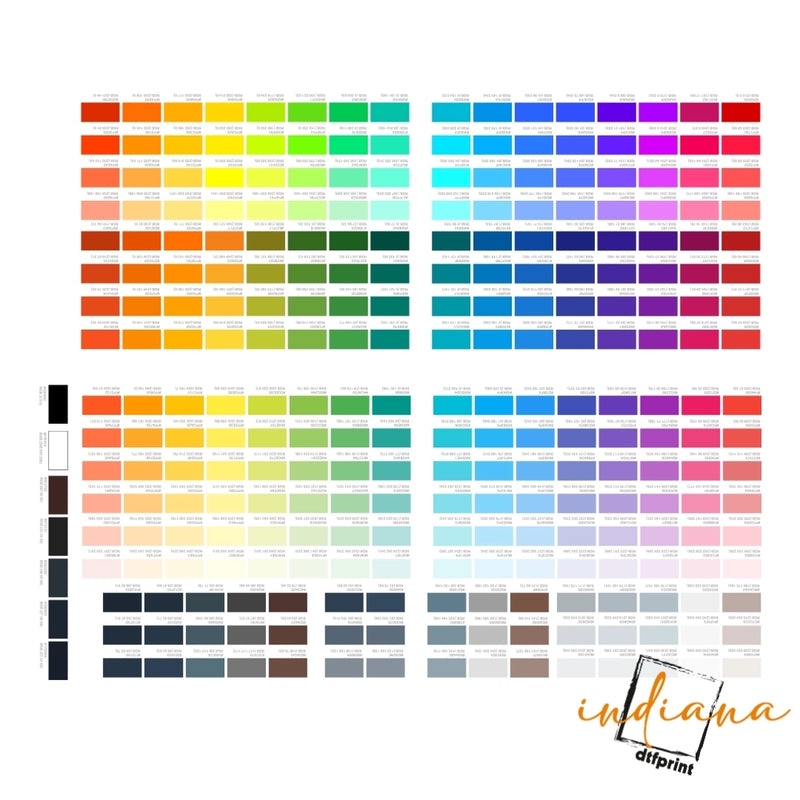You’ve got your heat press ready, your design printed, and your shirt perfectly positioned. You press the transfer… and it doesn’t stick. Frustrating, right? If you’ve ever asked yourself, “Why isn’t my DTF transfer sticking?”, you’re not alone. It’s a common issue — but one that usually has a clear solution.
Whether you’re new to DTF printing or have been pressing for years, understanding why a transfer might fail can save you time, money, and a lot of wasted materials. In this guide, we’ll walk you through the most common reasons your DTF (Direct-to-Film) transfer isn’t adhering — and how to fix them.
1. Temperature Isn’t Right
The number one culprit is incorrect temperature. Most DTF transfers require pressing at 275–325°F, depending on the film and powder used. If the heat press isn’t reaching the proper temperature — or if it’s uneven across the platen — your transfer won’t stick properly.
Solution:
- Use a heat gun or infrared thermometer to test your press’s actual surface temp.
- Double-check the manufacturer’s recommended settings for the transfer film.
- Preheat your press for at least 10–15 minutes before using.
2. Not Enough (or Too Much) Pressing Time
Time matters. Press too short, and the adhesive won’t melt enough to bond. Press too long, and you might overcook the transfer or burn the fabric.
Solution:
- Set your timer to the recommended time (usually 10–15 seconds).
- Avoid guessing — use a digital timer built into your heat press if possible.
- Always do a test press on a sample garment first.
3. Inadequate Pressure
DTF transfers need firm and even pressure to bond with the fabric. If you’re using too little pressure — or pressing on an uneven surface — the design may lift, crack, or not stick at all.
Solution:
- Adjust your heat press to medium-firm pressure. You should feel resistance when closing the press.
- Make sure your garment is flat, wrinkle-free, and not bunched at the seams or collar area.
- Avoid pressing over seams, zippers, or thick hems.
4. Fabric Isn’t Clean or Suitable
Oils, moisture, or even lint can interfere with the transfer process. Certain fabrics (like water-repellent nylon or heavily textured materials) may also resist adhesion.
Solution:
- Always pre-press your garment for 3–5 seconds to remove moisture and wrinkles.
- Use a lint roller to clean the surface.
- Stick to DTF-friendly materials like cotton, polyester, cotton/poly blends, and smooth synthetics.
5. Cold or Hot Peel Confusion
Peeling the film too early — or too late — is a classic mistake. Some DTF films are hot peel, while others are cold peel. Using the wrong method can cause the design to lift or partially transfer.
Solution:
- Know your film type: Hot peel? Peel within 3–5 seconds. Cold peel? Wait 30–60 seconds.
- Always follow the supplier’s directions.
- If unsure, let the transfer cool down completely — most DTF transfers work well as cold peel.
6. Poor-Quality Print or Adhesive Powder
Not all DTF materials are created equal. Low-quality ink, film, or adhesive powder can cause the transfer to fail — especially after washing.
Solution:
- Use trusted, high-quality DTF supplies from a reputable vendor.
- Make sure the adhesive powder is evenly applied and properly cured before pressing.
- Store unused transfers in a dry, dust-free area away from humidity.
7. Post-Pressing Problems
Sometimes, the transfer sticks fine at first, but peels or fades after washing. This usually points to issues during the pressing process — not enough pressure or time, or skipping the final pressing step.
Solution:
- Always follow up with a 5-second repress using parchment paper or a Teflon sheet to seal the design.
- Instruct your customers to wash inside-out on cold and avoid harsh dryers or bleach.
Quick Troubleshooting Checklist
|
Problem |
Likely Cause |
Fix It By... |
|
Transfer not sticking at all |
Low heat or too little pressure |
Increase temp/pressure |
|
Edges lifting |
Uneven surface or too fast peel |
Repress flat and peel properly |
|
Transfer peels after washing |
Incomplete bonding or poor materials |
Repress and upgrade supplies |
|
Film leaves residue or ink smears |
Overheating or wrong film type |
Check temp and peel method |
Final Thoughts
DTF printing is one of the most versatile and forgiving methods in the custom apparel game — but like any print technique, it requires dialing in the right process.
If your DTF transfer isn’t sticking, don’t panic. Walk through the checklist above, make adjustments, and always test before running a full batch. With the right tools and techniques, you’ll get flawless, durable transfers that stand up to washing, wearing, and whatever life throws at them.











